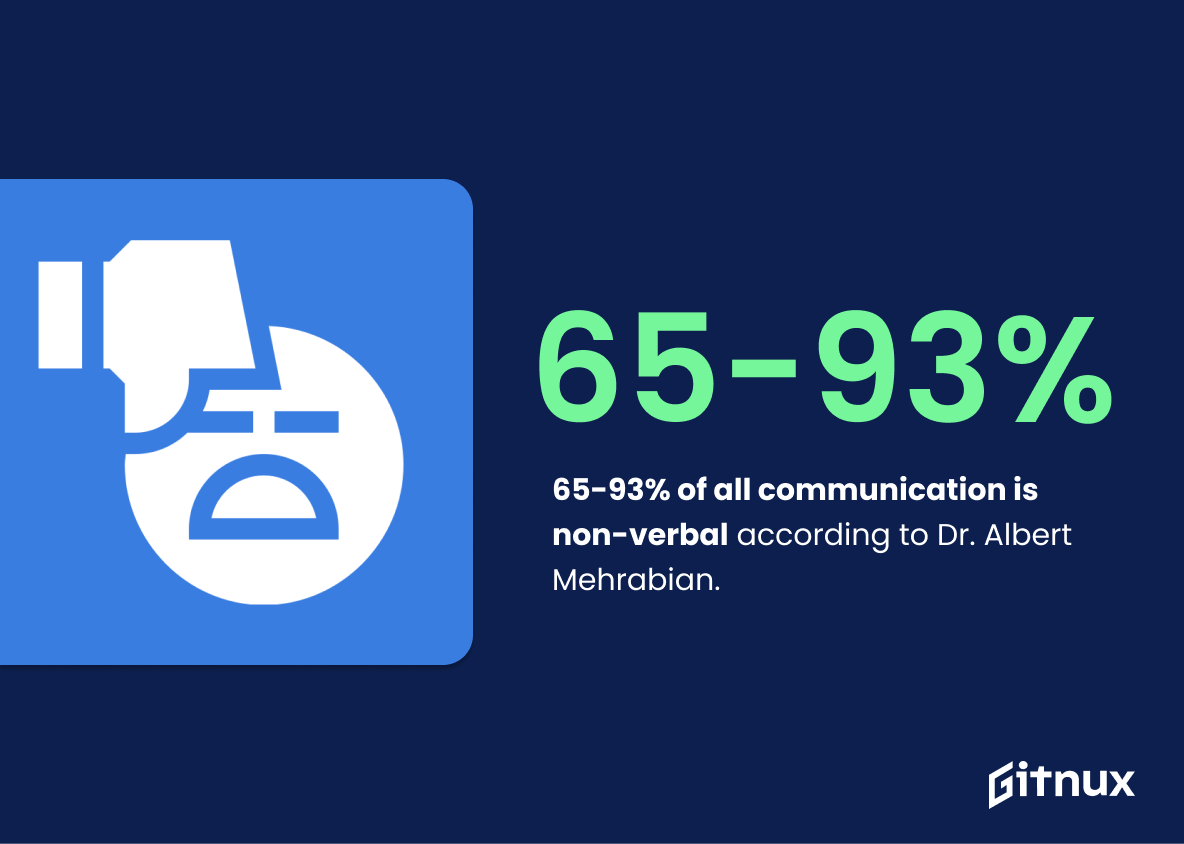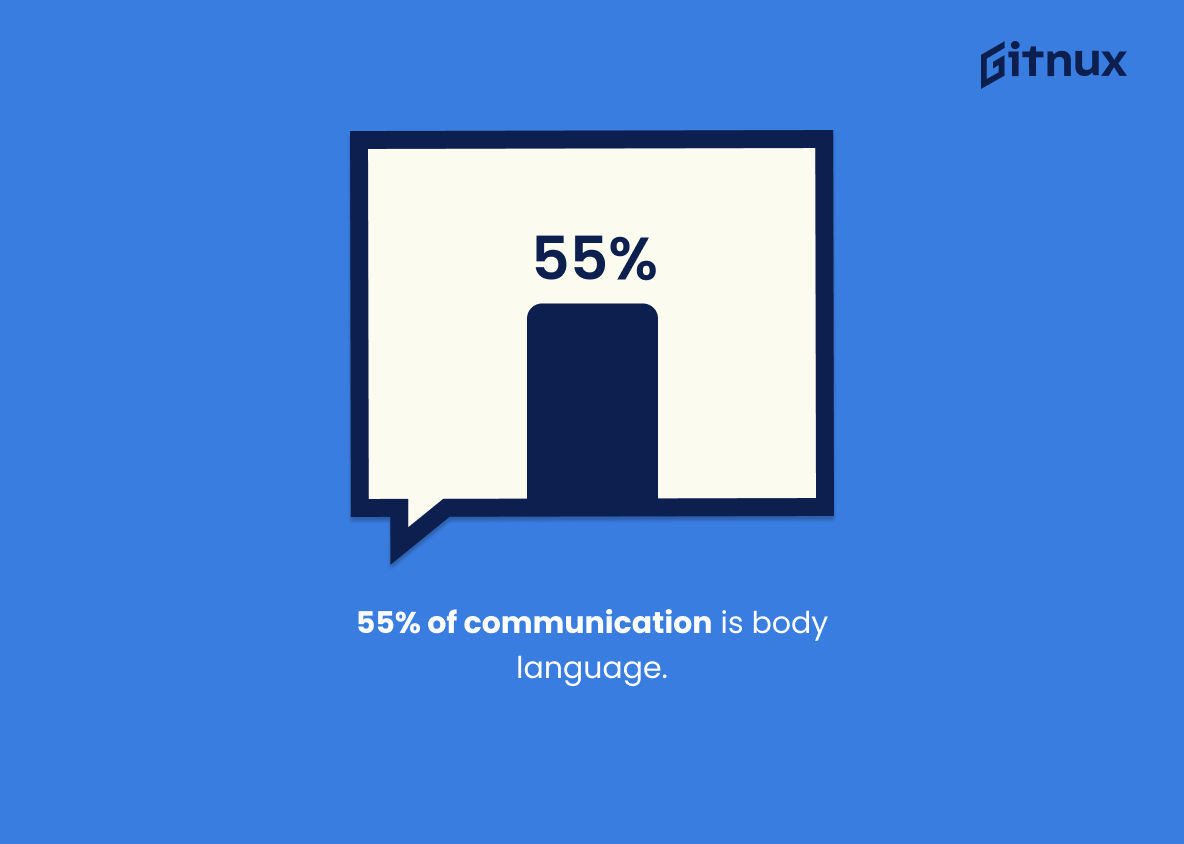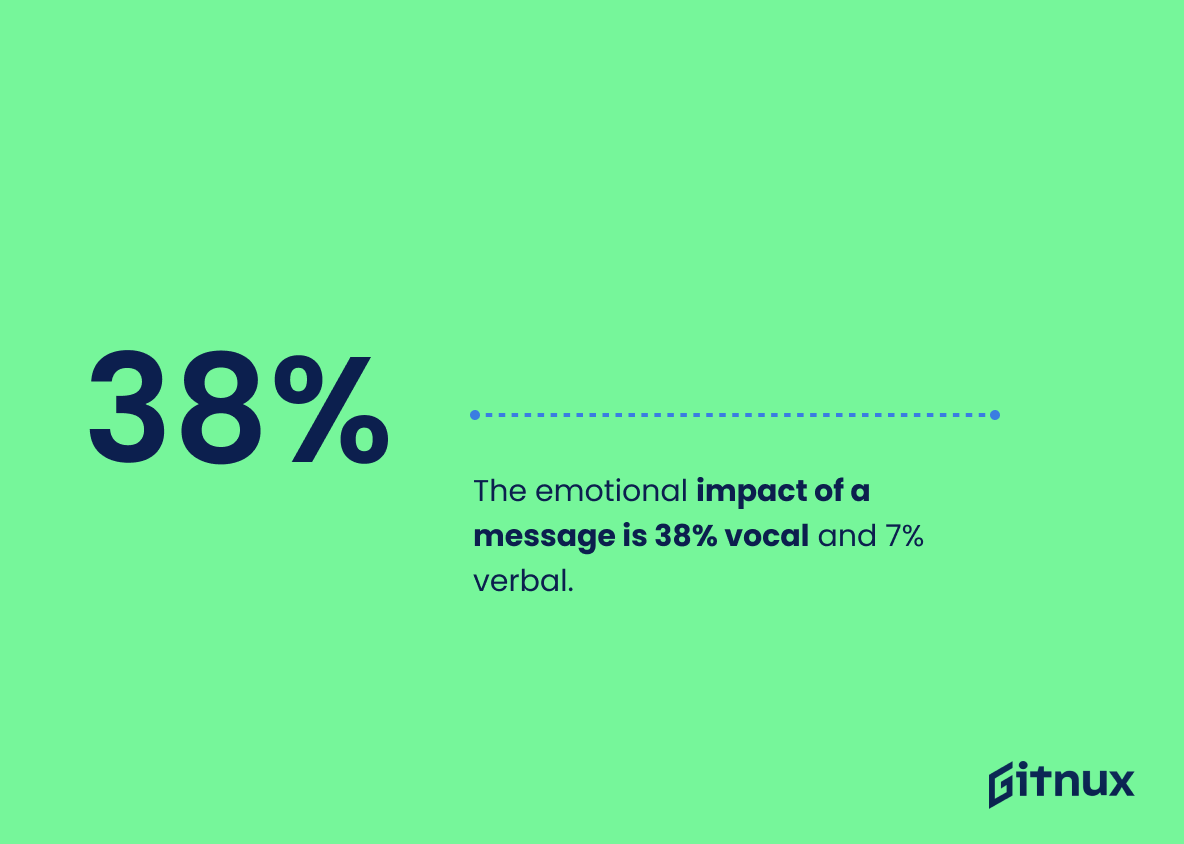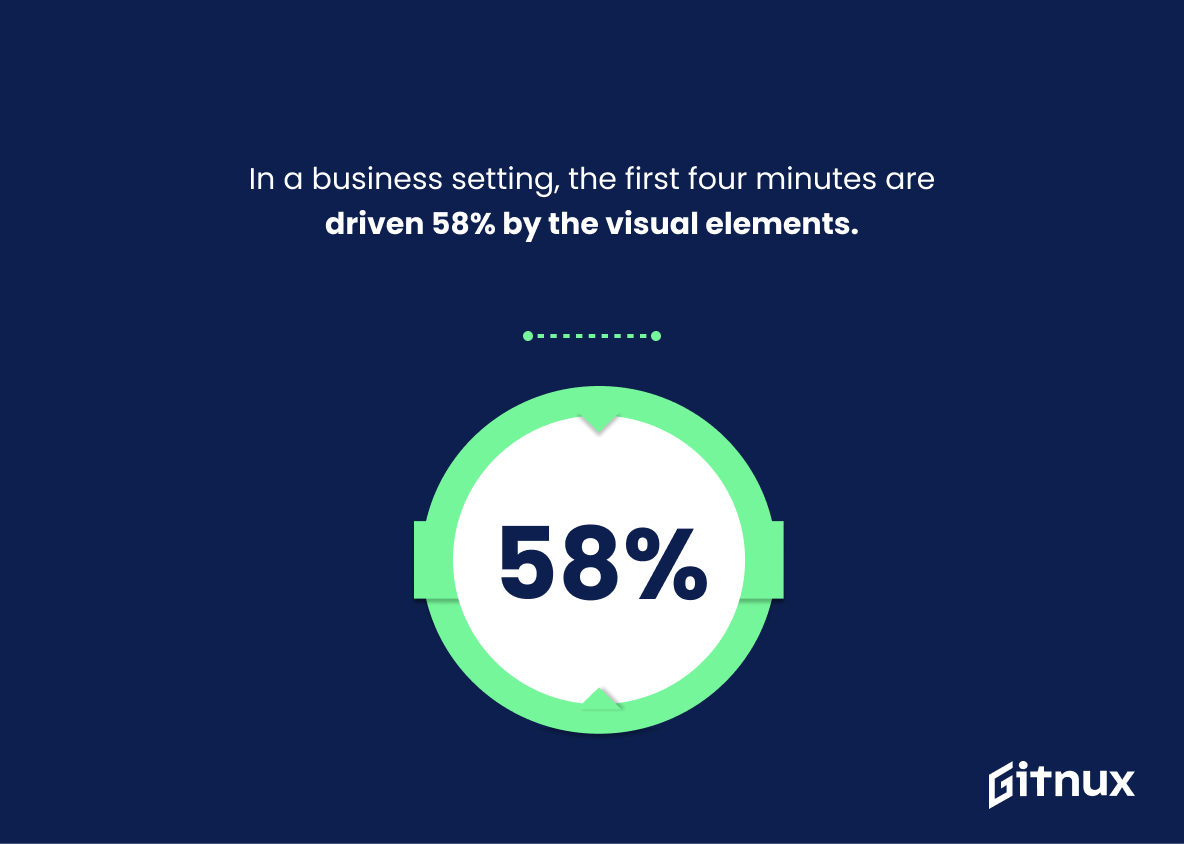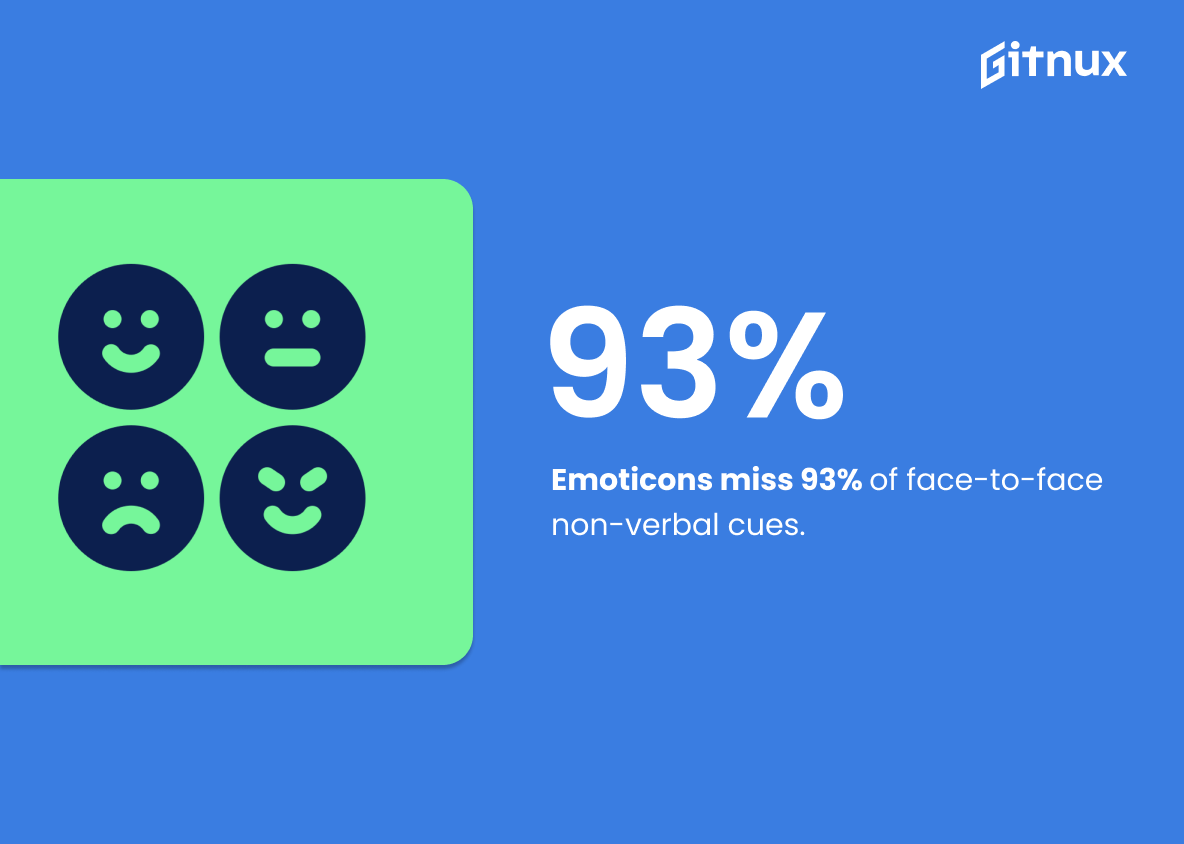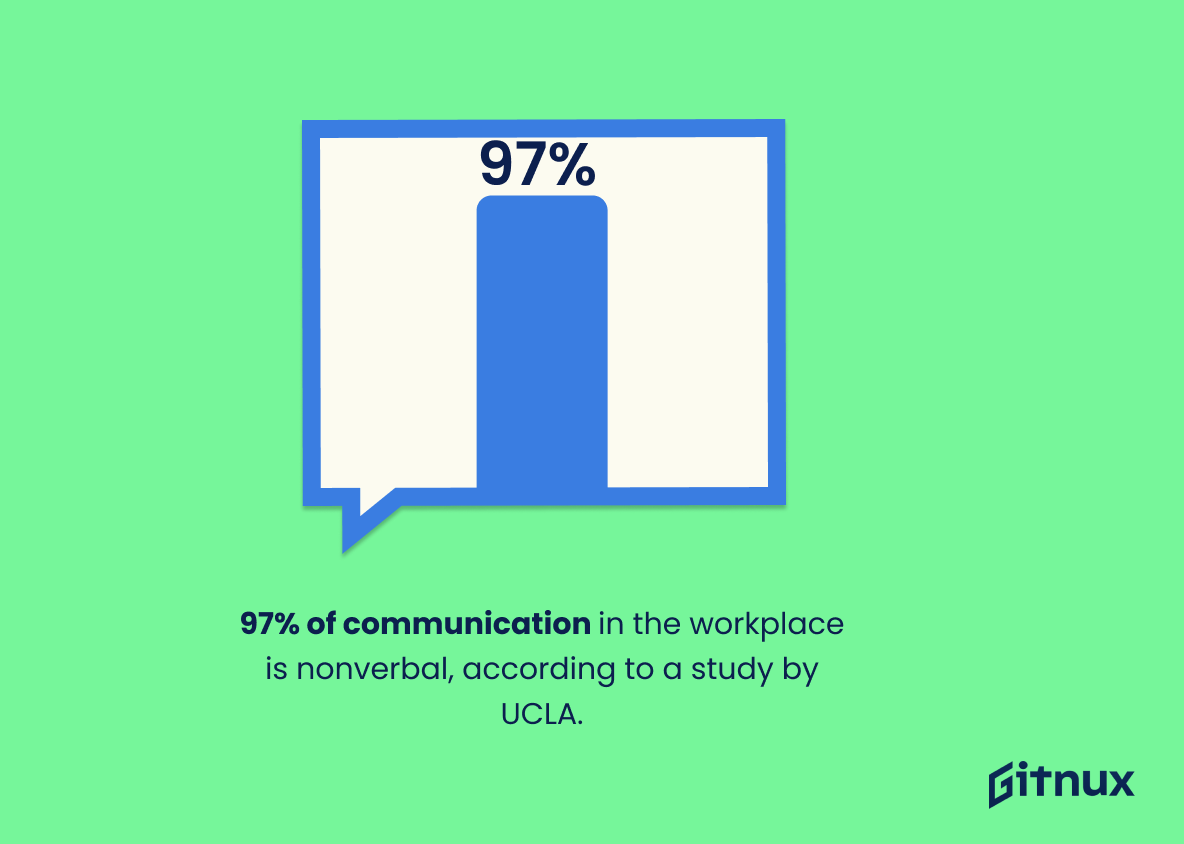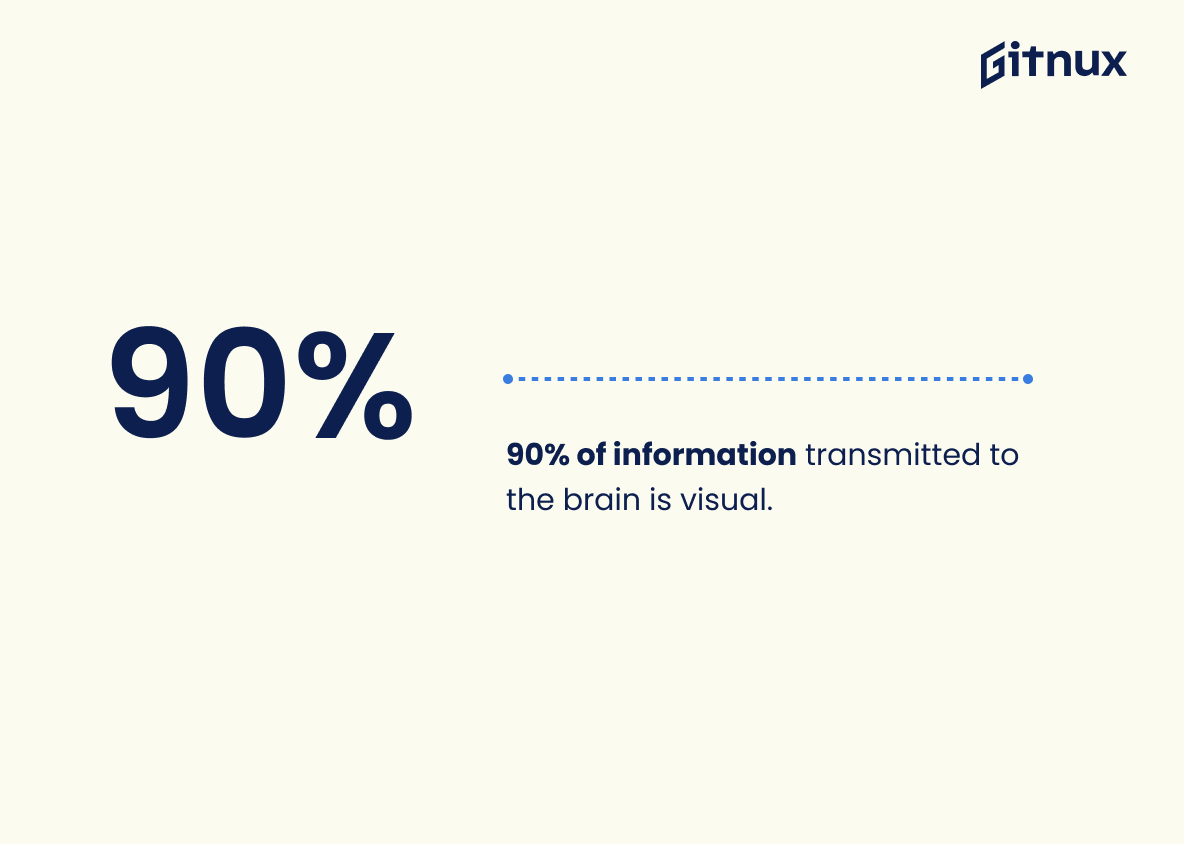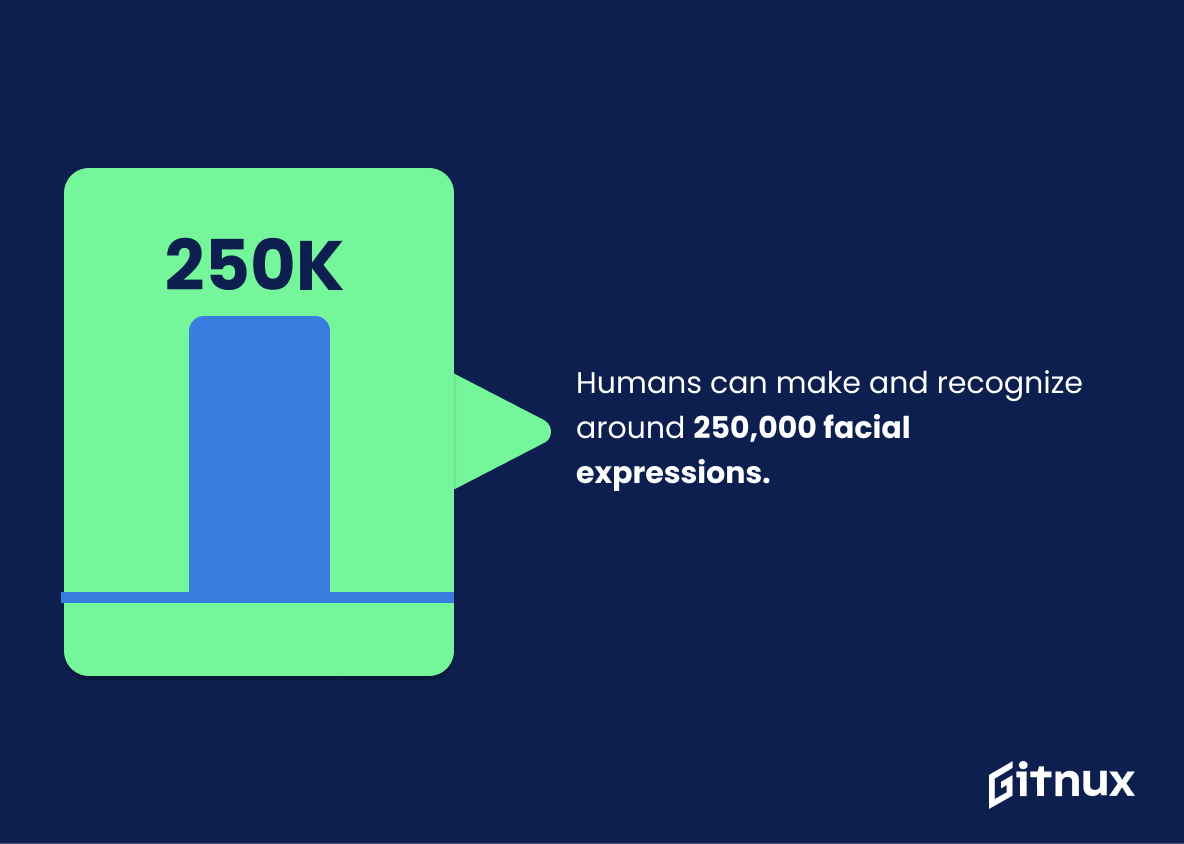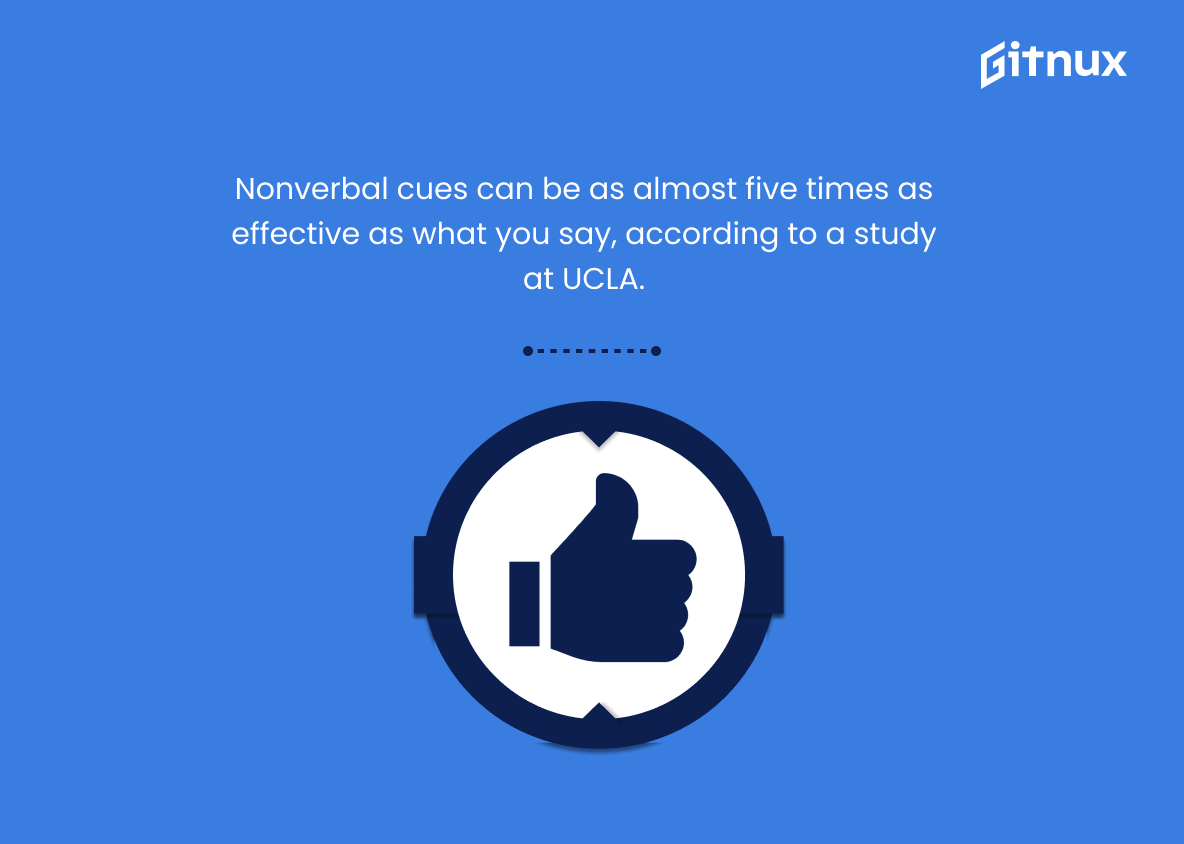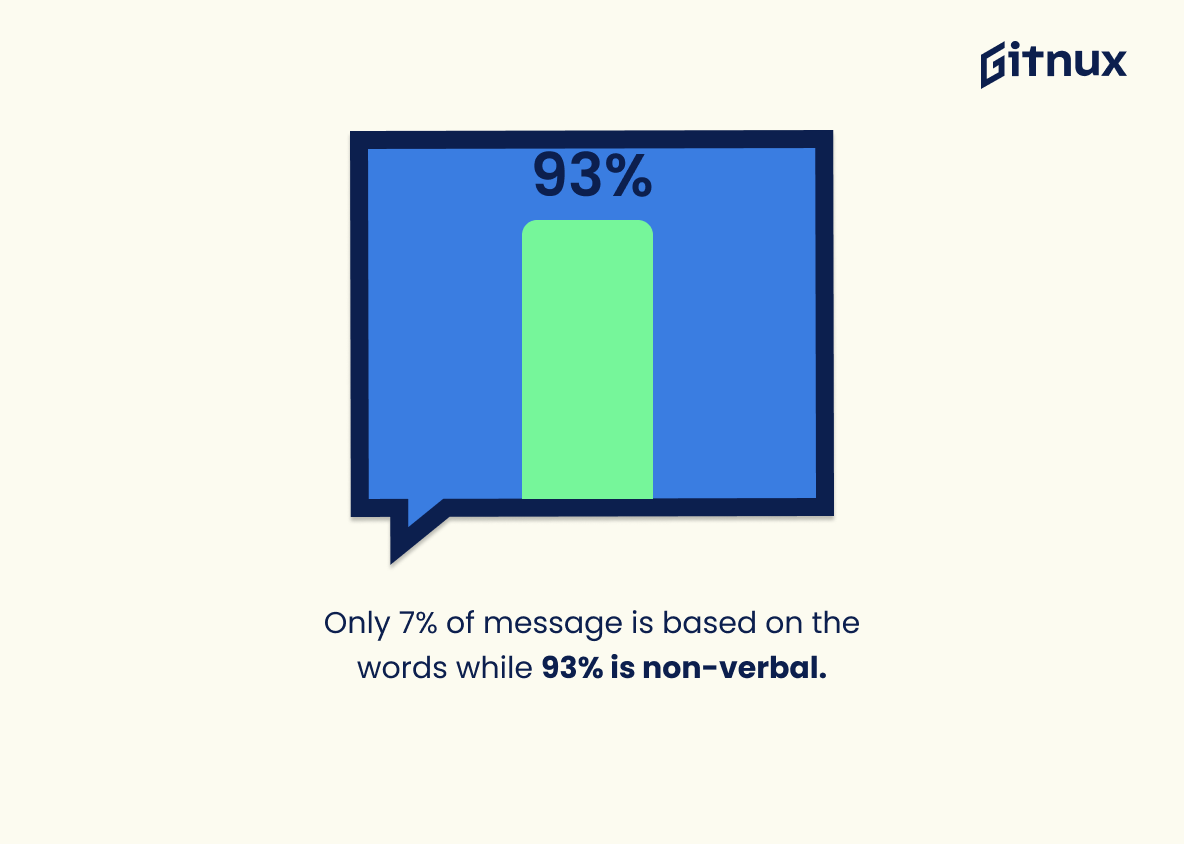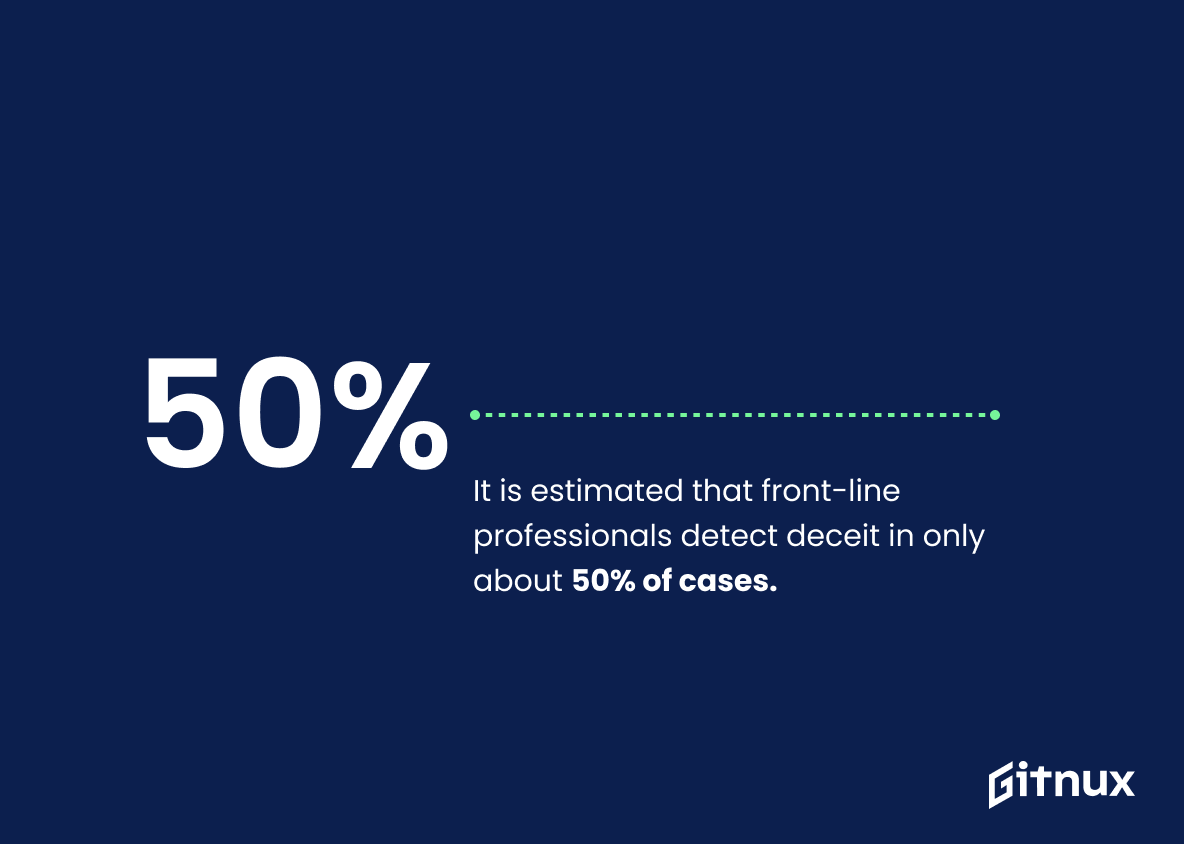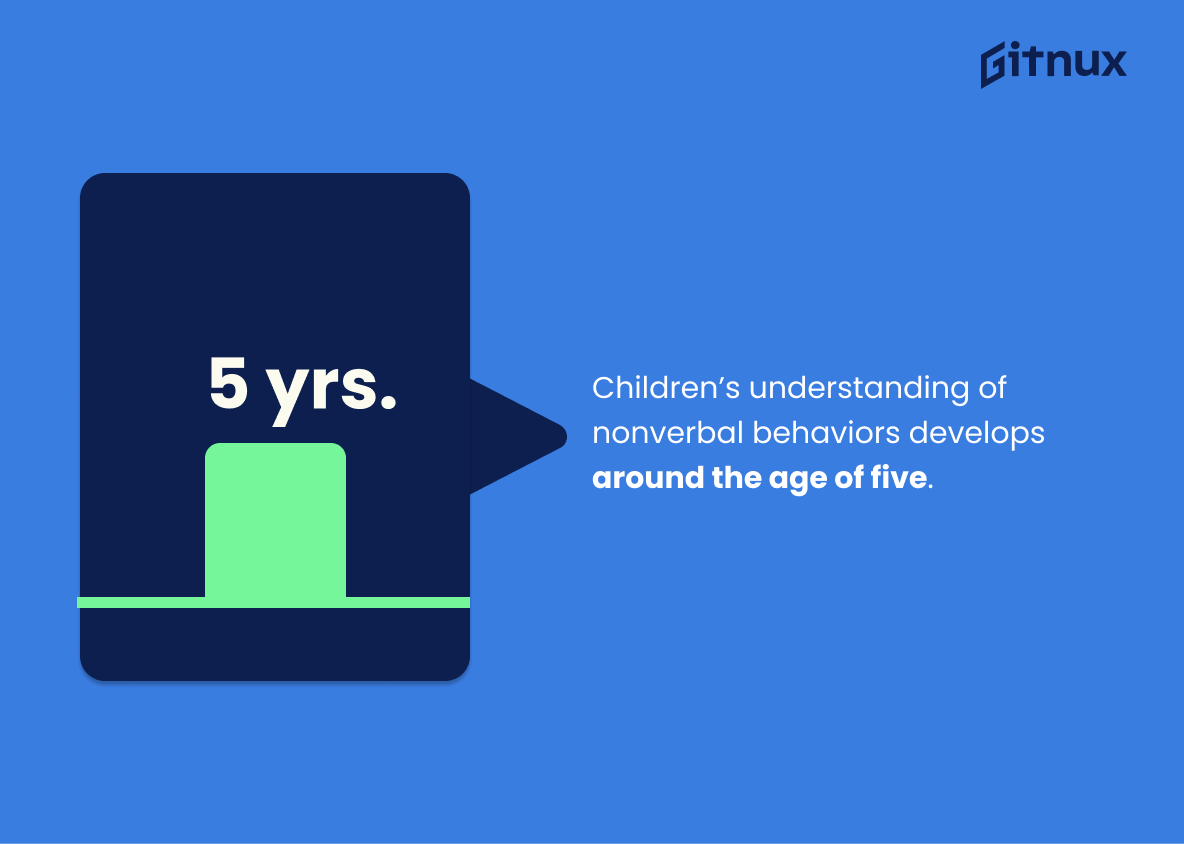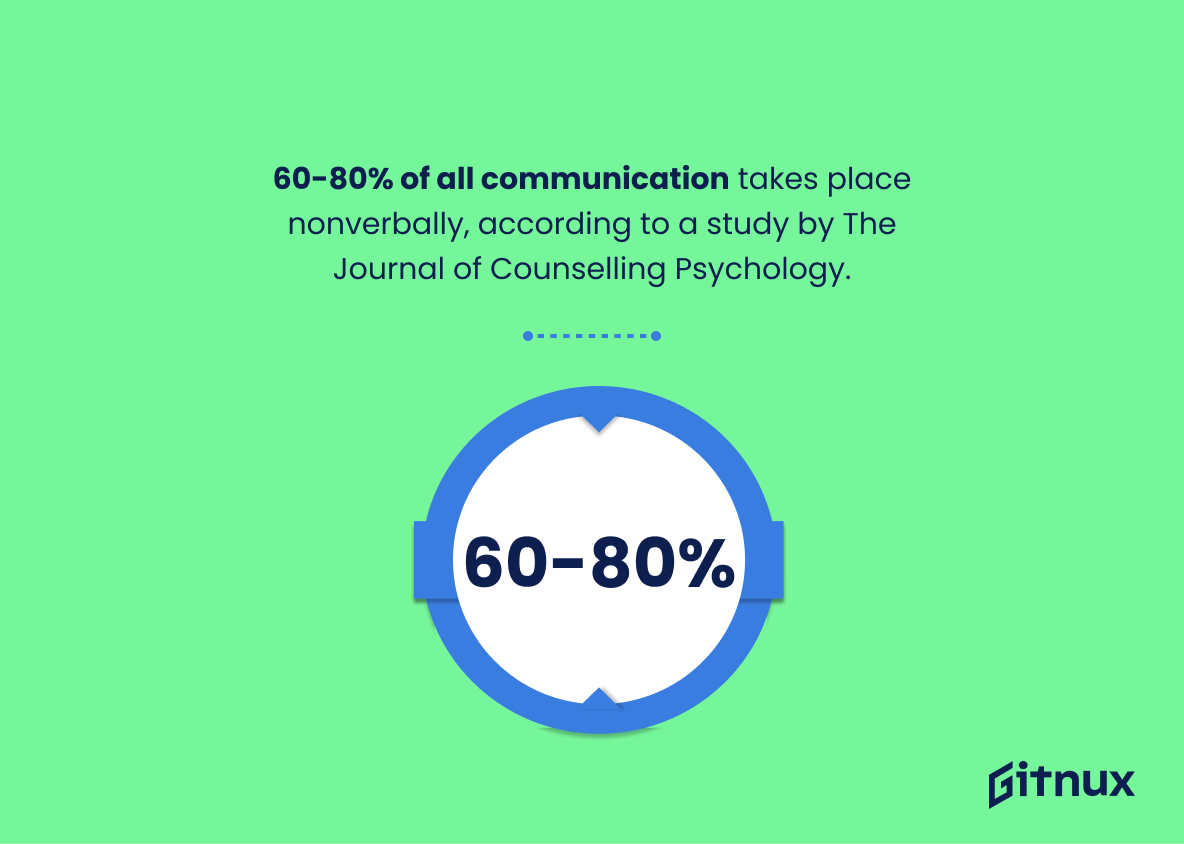Unveiling the power of unspoken interactions, we delve into the world of nonverbal communication. This fascinating realm of expressions influences our everyday lives more than we realize, painting profound impressions that sometimes words fail to capture. From a gentle nod of agreement to a stern look of disapproval, each gesture silently speaks volumes about our thoughts and feelings. In this thought-provoking blog post, we’re shedding light on intriguing nonverbal communication statistics that will astound you, challenge your perceptions, and encourage a deeper understanding of silent dialects people ‘speak’ around the world.
The Latest Nonverbal Communication Statistics Unveiled
65-93% of all communication is non-verbal according to Dr. Albert Mehrabian.
Delving into the realm of non-verbal communication offers a profound revelation – the words we utter form just a fraction of our overall communication. Dr. Albert Mehrabian’s research paints this gorgeous tableau. Reflect on it – 65 percent, venturing even up to 93 percent of all communication resting in the realm of the non-verbal. Herein lies the key that unearths a goldmine of insight for our discussion about Nonverbal Communication Statistics within a blog post. This broad spectrum gave birth to the assertion that our gestures, postures, facial expressions and even the pauses in our speech, craft the larger part of our communicative interactions, pushing the boundaries of the mere verbal. It is a dramatically grand stage where conversations find a deeper voice, often times without uttering a single word.
55% of communication is body language.
Sailing into the deep sea of nonverbal communication statistics, it’s hard to ignore the commanding lighthouse that beams a compelling figure – an astounding 55% of our communication is driven by body language. This detail, shimmering at its core, validates the critical significance of every gesture, pose, and physical expression we make. Within the kaleidoscope of a dialogue, silent body whispers often echo louder than spoken sections, painting a vivid landscape unuttered by the spoken word. This percentage is not merely a number – it’s an ethos emphasizing the dominating influence of nonverbal cues in human exchanges. This intriguing tidbit isn’t just a few grains of statistics sand – it’s the entire desert shaping our understanding of effective communication. So, next time you express yourself without uttering a word, remember, body language carries a lion’s share of your unspoken narratives.
The emotional impact of a message is 38% vocal and 7% verbal.
Delving into the spectrum of nonverbal communication, this intriguing statistic serves as a compelling testament to the weightage of tone and inflection compared to the actual words used. In the grand tapestry of human interaction, as reflected in the proportions of this statistic, the vocal component – the cadence, pitch, volume of our voice – has a 38% sway on the emotional resonance of a message. On the other hand, the verbal expression, or the words themselves, account for only 7%. This amplifies the pertinence of understanding and harnessing nonverbal cues, notably in spaces where communication is central. For anyone diving into a blog post about Nonverbal Communication Statistics, navigating through such empirical insights can significantly enhance their grasp of communication’s nuanced, less overt aspects. Ultimately, it elucidates the silences between our words, speaking volumes about the power of what isn’t verbally articulated.
In a study, 5,000 distinct hand gestures by humans were recorded.
To truly grasp the magnitude and richness of nonverbal communication, consider the fact that a single study cataloged a staggering 5,000 unique hand gestures deployed by humans. This fascinating piece of data offers us a glimpse into the complexity and diversity of nonverbal cues; it’s not just about facial expressions or the tone of voice. Human interaction is an art form that intertwines gestures, stance, and body language to create a mosaic of unspoken conversation. This vast inventory of hand signals underscores their role as a language in their own right, revealing the depth of what we convey without uttering a word, and it’s a reason to delve further into the intricacies of nonverbal communication.
In a business setting, the first four minutes are driven 58% by the visual elements.
Drawing parallels with the theatrical world, imagine a blog post about nonverbal communication as a grand stage where visual elements take the lead role. In the first act, lasting roughly four minutes, these visual elements capture an overwhelming 58% of the business audience’s attention. This underscores the power of nonverbal cues in setting the tone in a business environment. Hence, in the grand stage of communication, this statistic spotlights the pivotal role of visual elements and their ability to shape perception and influence reactions swiftly, often before a single word is spoken.
Emoticons lack 93% of non-verbal cues present in face-to-face communication.
Delving into the intriguing world of nonverbal communication, our discovery unveils an interesting fact – emoticons fall short in replicating 93% of non-verbal cues predominant in face-to-face interactions. In a conversation-decoding blog post about Nonverbal Communication Statistics, this finding becomes a critical point of discussion. It illustrates how digital communication modes may be an imperfect replacement for the rich, multi-layered tapestry of facial expressions, body language, and tone of voice that constitute in-person communication. Consequently, this highlights the limitations of emoticons, and potentially other digital communication tools, in conveying the full range of human sentiment and intention. As such, understanding this deficit is central to navigating the terrain of digital communication and proposing improvements for the future.
97% of communication in the workplace is nonverbal, according to a study by UCLA.
Delving into the profound depths of nonverbal communication, an intriguing revelation emanates from a UCLA study. A staggering 97% of workplace communication transpires through nonverbal cues. This staggering figure takes center stage in the sphere of our discourse on nonverbal communication statistics for multiple reasons.
Initially, it underscores the salient role nonverbal interaction inherently plays within any professional setting, acting as the silent yet powerful conductor orchestrating our daily transactions. Gestures, facial expressions, tone, and body language often speak louder than words, weaving a tapestry of implicit dialogue that encapsulates a substantial proportion of the communication process.
Moreover, it highlights the crucial importance for both employers and employees to master the art of nonverbal communication. Understanding, interpreting, and employing nonverbal cues effectively could be the game changer in significant business situations like negotiations, employee interactions, and customer relations, where successful outcomes are often predicated on the subtler nuances of communication.
Last but not least, the 97% figure underlines the need for research, education, and advocacy around nonverbal communication. To ensure holistic and productive communication strategies in the workplace, we need to shift our focus to this influential yet often overlooked aspect of our interactions.
In a nutshell, this astounding statistic is not just a number but a compelling call to recalibrate our communication strategies and harness the potent power of nonverbal signals in the business arena.
90% of information transmitted to the brain is visual.
In a world teeming with stimuli and data, 90% of what our brain soaks up comes in a visual form- a testament to the immense power of nonverbal cues. Now, let that marinate for a moment. When talking about nonverbal communication statistics, the potency of this figure simply cannot be ignored. Just imagine the layers of unsaid dialogue that our brains process without us even realizing. It’s like an artist painting a masterpiece with invisible strokes, revealing a broader canvas of understanding. All this speaks volumes about the necessity for quality visual communication in blog posts. It aids in sending across subtle messages that words may sometimes fail to convey, underscoring the relevance of graphics, pictures, and other visual aids. It also encourages bloggers to be mindful of their presentation, as aesthetics can subconsciously impact a readers’ perception. The ability to harness the punch behind this 90% could be the determining factor between a thriving blog and one that falls short.
Humans can make and recognize around 250,000 facial expressions.
Delving into the realm of nonverbal communication, an astonishing facet to highlight is the human ability to create and identify approximately a quarter of a million distinct facial expressions. This not only underscores the complexity of our social interactions but also adds a new layer of depth to how we translate unspoken signals. Presented in numbers, it is a testament to the richness and diversity with which we communicate beyond words, each face acting as a subtle symphony of cues and indications that invisibly stitch our dialogues together. This understanding is a powerful key that unlocks enhanced engagement, empathy and connectivity for humans. Therefore, in the vast landscape of nonverbal communication, it offers a compelling narration of just how intricate, nuanced and influential our facial exchanges truly are.
Nonverbal cues can be as almost five times as effective as what you say, according to a study at UCLA.
This fascinating nugget of information from a UCLA study underscores the profound impact nonverbal cues can have on communication, serving as a pivotal cornerstone in our exploration of nonverbal communication statistics. The potency of a silent gesture or a lingering look, being almost five times as effective as spoken words, is more than just anecdotal wisdom. This illuminates the real-world power the nonverbal canvas has on shaping our interactions. Possessing an understanding of this concept can significantly transform the way we perceive and engage in dialogue, both personally and professionally. For the writer of a blog post or the avid reader thirsty for knowledge about nonverbal communication, it lends credence to the importance of mastering this less visible yet impactful language. It reminds us to do more than just listen with our ears, but also with our eyes and intuition.
Workers spend 2.8 hours per day reading and answering emails.
In the realm of nonverbal communication, the intriguing statistic that workers devote 2.8 hours of their day to perusing and responding to emails offers a different perspective. These digital exchanges, devoid of face-to-face interactions, provide unique challenges and opportunities for nonverbal communication. As much as nonverbal cues play an essential part in face-to-face conversations, they equally make a significant impact in written correspondence.
Interpreting tone, inflection, and emotion prove harder in emails than personal interactions, underscoring the relevance and necessity of understanding nonverbal cues in the digital communication landscape. The statistic, therefore, foregrounds the importance of enhancing skills in deciphering subtle cues and effectively communicating complex ideas without the aid of body language, facial expressions, and vocal variation. Hence, in an information-driven world where email is a primary communication tool, nonverbal skills could positively influence comprehension, increase engagement, and promote a more effective communication environment.
Only 7% of message is based on the words while 93% is non-verbal.
Underlining the significance of non-verbal communication, one must highlight an eye-opening statistic- only seven percent of a message is delivered by words. The colossal 93% springboards from non-verbal cues, painting the pillar of human interaction in broad strokes. This confetti of percentages flutters throughout a blog post about Nonverbal Communication Statistics, underscoring the importance unspoken communications carry. It prevails like an unchallenged monarch in the realm of human interaction, silently speaking volumes. Apart from defining our everyday responses, it also molds perceptions we create in others’ minds, thereby influencing relationships and negotiations. Thus, mastering this silent language can propel one’s personal and professional life, making this statistic the heart of any talk around non-verbal communication.
It is estimated that front-line professionals detect deceit in only about 50% of cases.
Delving into this intriguing statistic, we unearth an essential reality about the role of nonverbal communication. This fact paints a telling picture: even professionals armed with expert knowledge and wide-ranging experience can only pinpoint deceit in about half of the instances. It underscores the complex nature of nonverbal cues and their pivotal role in our daily communications.
In a blog post on Nonverbal Communication Statistics, such a statistic serves as a powerful compass, guiding us towards the realization that nonverbal cues are not just simple gestures and expressions to be read plainly. Instead, they form an intricate tapestry, woven with subtlety, sophistication, and at times deception. Indeed, it instills in us a sense of caution but also ignites curiosity to delve deeper, learn more, and possibly increase our proficiency in discerning the truth.
Simply put, the nuances of nonverbal communication are steeped in layers of subtlety that even trained eyes might miss. It’s a sobering acknowledgement of the profound ambiguity that comes bundled with our silent communicative cues, compelling us to not just passively read, but deeply comprehend the unwritten language of nonverbal communication.
Children’s understanding of nonverbal behaviors develops around the age of five.
In framing a blog post about nonverbal communication statistics, knowledge of the age at which children typically start to grasp nonverbal cues is pivotal. Recognizing that around the fifth year of life, children begin to decipher nonverbal communication, sheds light on the evolutionary process of human interaction. It signifies the moment when the world of unspoken language unfolds to a child – adding depth to the already complex labyrinth of social interactions. Moreover, it also provides insights into the age-specific development of communication skills suggesting the potential window for early intervention in communication disorders or enhancements in education strategies. These fascinating facts about the early development of nonverbal communication skills offer readers a more comprehensive understanding, spinning an intricate web of interconnected factors leading to our proficiency in this silent language.
60-80% of all communication takes place nonverbally, according to a study by The Journal of Counselling Psychology.
Immersing ourselves in the captivating realm of nonverbal communication, one cannot help but marvel at the revelations pointed out by The Journal of Counselling Psychology. The enchanting dance of silent words, painted by our gestures, facial expressions, and body language, constitutes a staggering 60 – 80% of all our interactions. This revelation dips the spotlight on the significance and influence of nonverbal cues amidst our communications, cementing their relevance for any blog post examining this realm. It underlines the vital necessity to master these subtle signals, from the shape of a smile to the rhythm of a walk, where silence often speaks louder than words. An understanding of this statistic will truly embellish our appreciation of this symphony of unspoken words, enriching our exploration of this fascinating subject in our blog post.
People interpret nonverbal cues 13 milliseconds quicker than auditory ones.
Delving into the captivating realm of nonverbal communication, this statistic stands as a beacon illuminating the impressive speed at which humans process visual information. Interpreting nonverbal cues 13 milliseconds faster than auditory ones complements the thesis of nonverbal communication’s significance, underscoring its pivotal part in our daily interaction dance. Additionally, it introduces a fascinating facet that places the efficacy of body language, facial expressions, and gestures into the spotlight and sparks readers’ curiosity in their functions in communication. This fact substantiates the narrative, explaining why humans often trust their gut feelings or first impressions based on visual cues, promoting an engrossing deeper dig into the world of nonverbal communication.
People are six times more likely to remember information three days after meeting when an image is used.
In the realm of nonverbal communication, weaving the tapestry of dialogue isn’t just about letters and words. It’s an intriguing dance that unleashes the expressive kaleidoscope of visuals. Imagine the significance of the statistic – ‘People are six times more likely to retain information three days after meeting when an image is used’. In the grand scheme of your blog post about Nonverbal Communication Statistics, this can form the cornerstone of an impactful message.
Images, a staple of nonverbal communication, serve as a dynamic conduit for the transmission of ideas, thoughts, and information. Where words might fail, images step in to craft a vivid, indelible imprint on people’s memories, amplifying recall capability by a striking six-fold. By integrating relevant images, you are honing a potent tool within nonverbal communication, nurturing an environment of enhanced retention and engagement, leading to a richer, more memorable interaction.
Conclusion
In this digital age where written communication is prevalent, understanding nonverbal communication statistics reaffirms its importance in personal and professional settings. The power it beholds in creating connections, facilitating understanding, conveying emotions, impacting decisions and even driving sales is undeniable. As these statistics underpin, there is a vast and significant world beyond words that communicate much of our thoughts and feelings. If correctly understood and appropriately used, nonverbal communication can enhance interpersonal communications, influence perceptions, and improve business results. The profound, yet subtle essence of nonverbal cues and their paramount influence in the way we communicate, indeed provides a compelling argument for striving to understand them more deeply.
References
0. – https://www.psycnet.apa.org
1. – https://www.www.enago.com
2. – https://www.www.cabq.gov
3. – https://www.www.mckinsey.com
4. – https://www.link.springer.com
5. – https://www.www.mediatecgroup.com
6. – https://www.effectivesoftwaredesign.com
7. – https://www.ethos3.com
8. – https://www.www.frontiersin.org
9. – https://www.www.ncbi.nlm.nih.gov
10. – https://www.nacada.ksu.edu
11. – https://www.blog.hubspot.com
12. – https://www.www.cambridge.org
13. – https://www.journals.plos.org
14. – https://www.www.psychologytoday.com
15. – https://www.www.dsource.in
